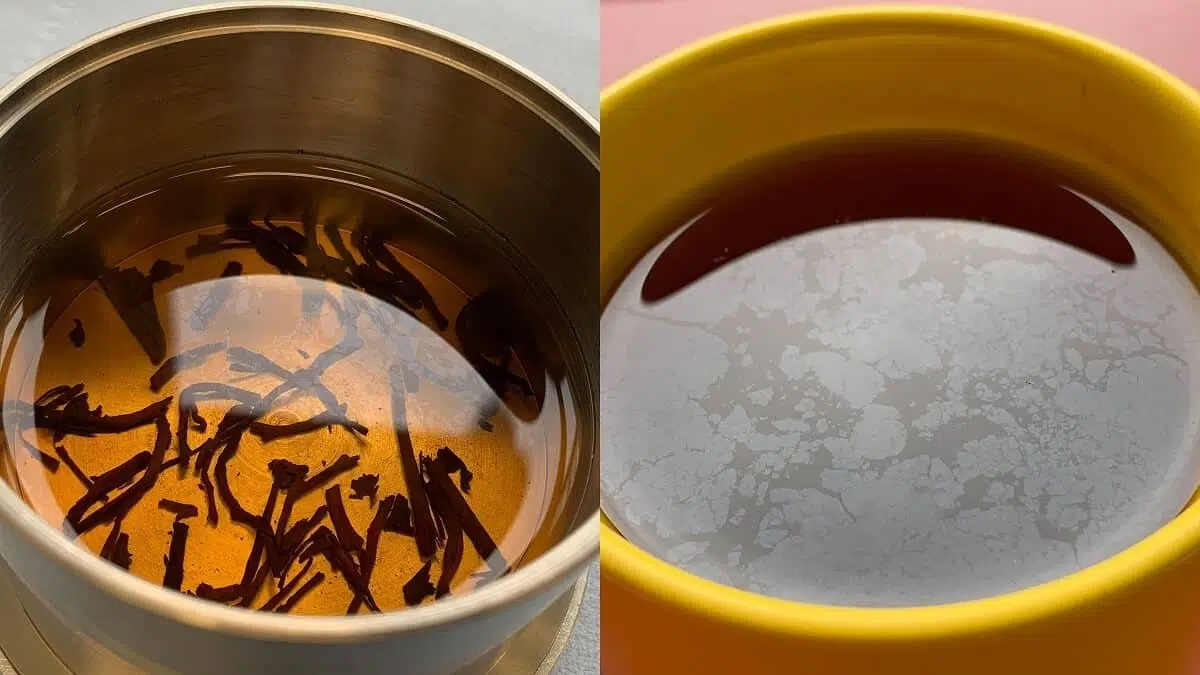If you’re a tea fan, you may have noticed the thin, oily film that sometimes forms on the top of the drink. Why does this happen? According to new research, the answer lies not only with the chemistry of the tea, but fluid dynamics. The oily film on black tea is mostly made of some of the compounds in the tea – particularly, molecules called polyphenols – and calcium carbonate. Calcium carbonate is present in tap water, but its content varies from place to place. A higher concentration of calcium carbonate will create a thicker film on your tea. “Tap water in many regions comes from limestone aquifers, where calcium carbonate, is a harmless compound.
(This is also why tea of the same strength can appear darker in some places – calcium carbonate raises the pH of the tea, and tea with a higher pH is darker.) Researchers have known for a while that while calcium carbonate makes the oily film thicker, sugar and lemon juice have the opposite effect and thin it out. Milk is more complicated: it can thin the film, but small amounts of milk make it thicker. So there’s more to a cup of tea then you thought. Dunking a cookie in your tea is another story.….Ed
Source: Ellen Phiddian/Photo: ETH Zürich, Department of Health








Comments